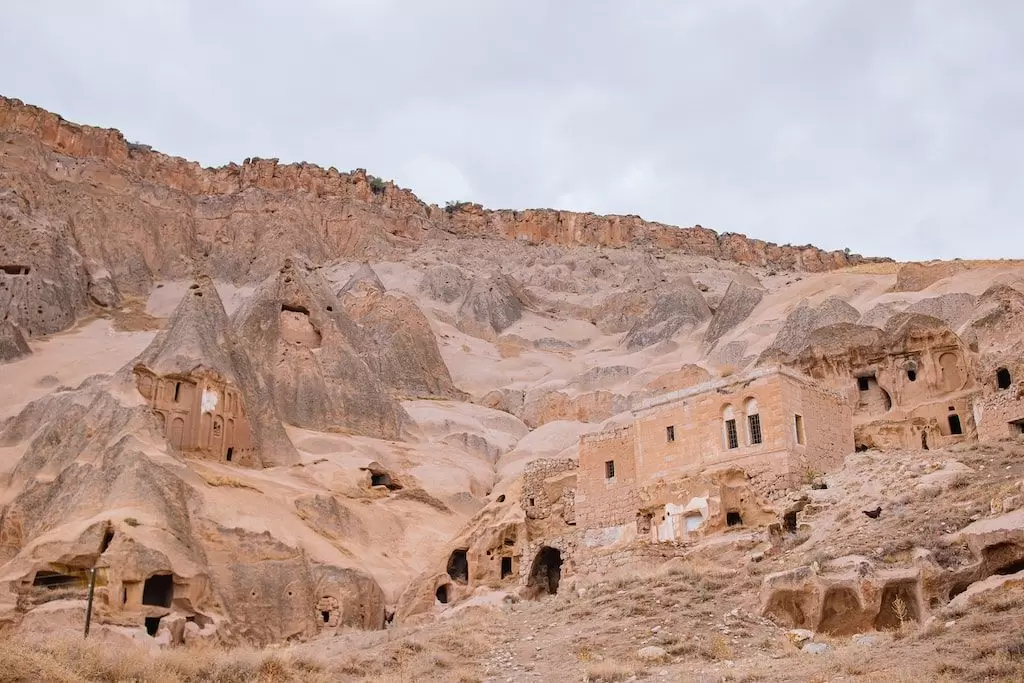Selime Monastery, also known as Selime Cathedral, is an impressive rock-cut monastery located in the Cappadocia region of Turkey. The monastery was carved into the soft tuff rock cliffs of the Güllüdere Valley in the 8th and 9th centuries AD, during the Byzantine era.
It is believed that the monastery was founded by Saint Proklos, a Cappadocian saint who was active in the region during the 4th century AD. The monastery was later expanded and developed by monks who sought a peaceful retreat from the world. The Seljuk Turks took control of the region in the 12th century and used the monastery as a fortress.

The monastery complex includes a church, a large courtyard, living quarters, and numerous storage rooms, all carved into the rock. The church is the largest and most impressive structure in the complex, featuring a nave with three apses, two side aisles, and a narthex. The church also has a large dome, which is supported by columns and arches.
The Selime Monastery is also significant for its role in the history of Christianity in the region. During the Byzantine era, Cappadocia was an important center of Christian thought and culture, and many monks and theologians lived in the region. The Selime Monastery is an example of the unique architectural style that emerged in Cappadocia during this period.
Today, the Selime Monastery is a popular tourist destination in Cappadocia, attracting visitors who are interested in its rich history, stunning architecture, and beautiful views of the surrounding valley. It is also a UNESCO World Heritage Site, recognized for its cultural and historical significance.




